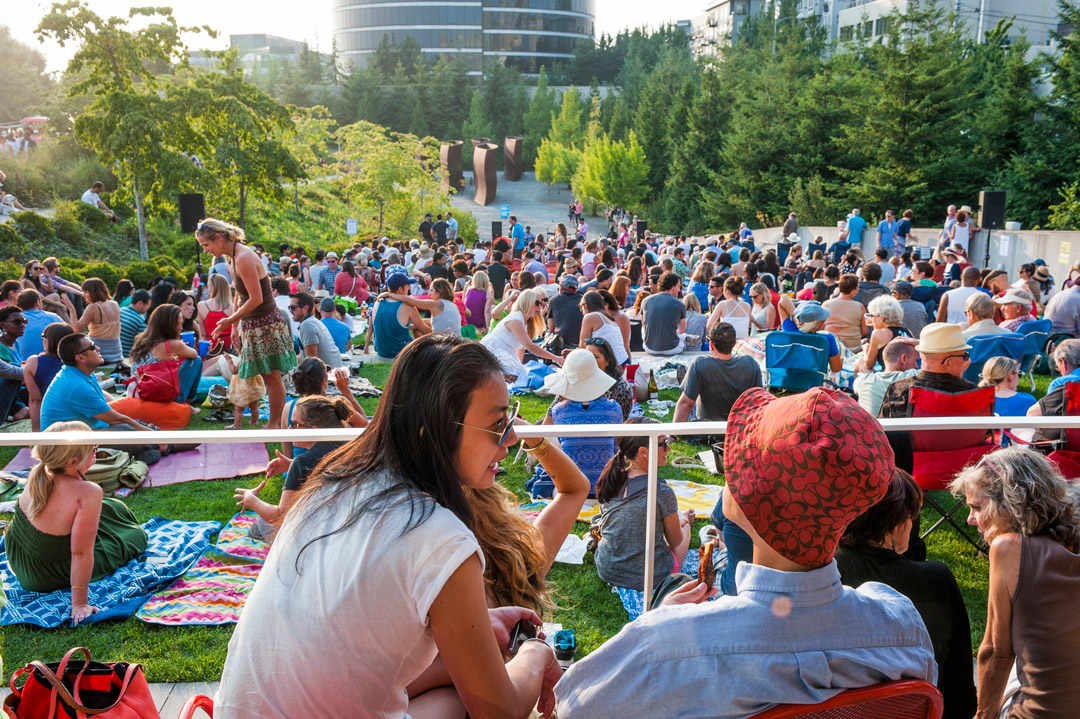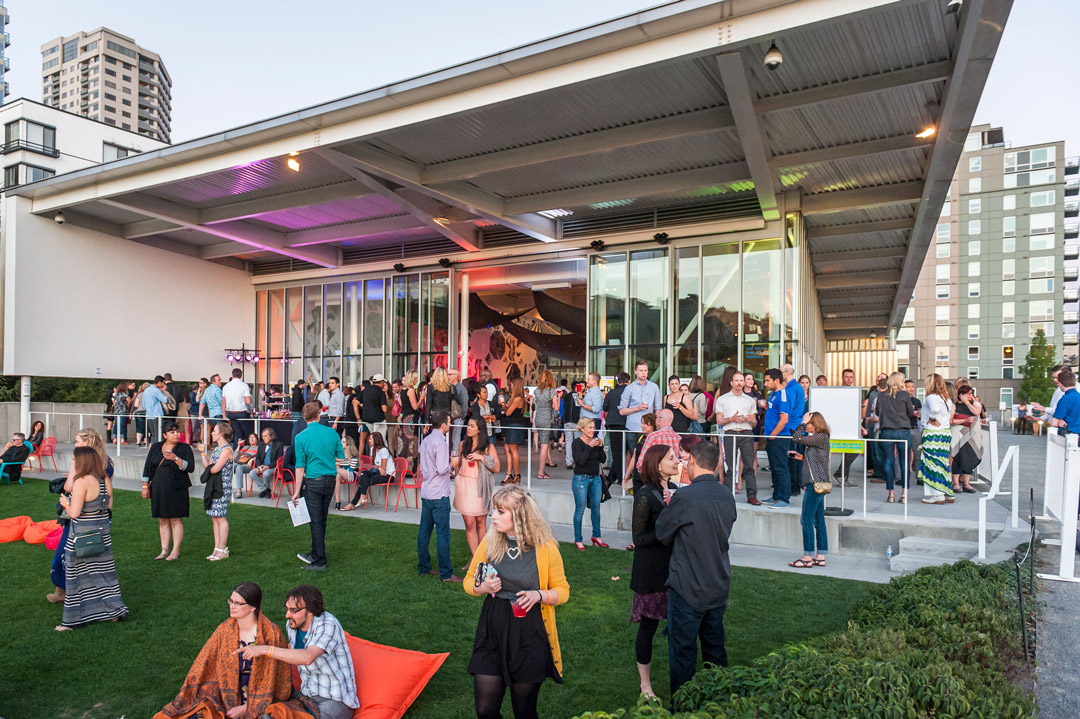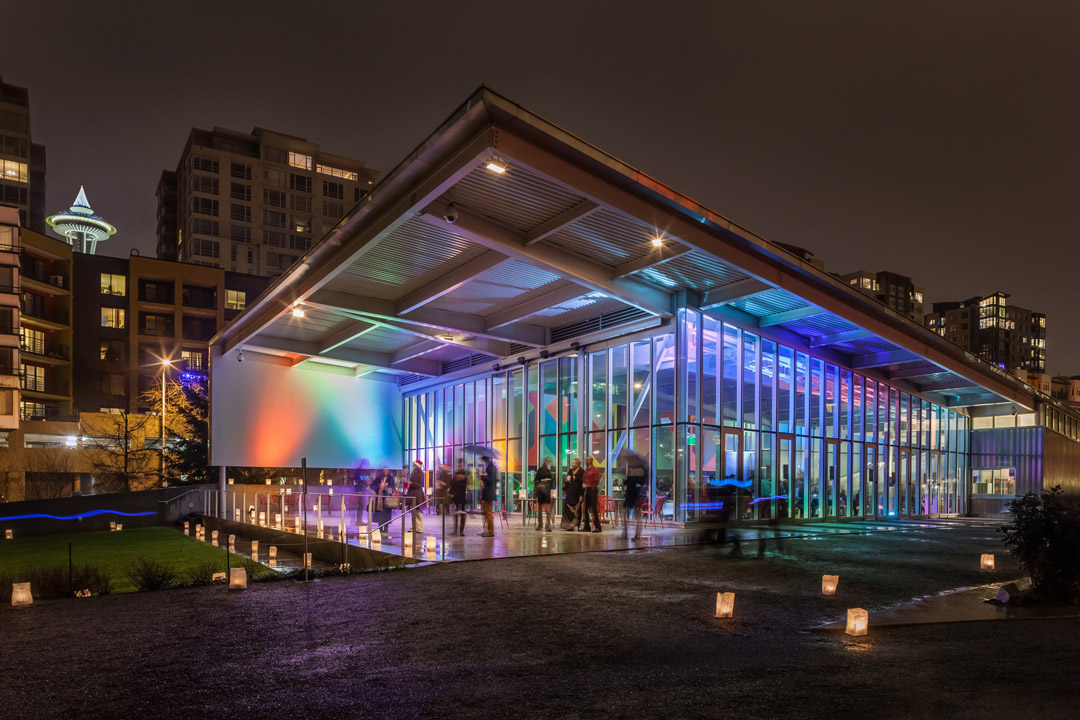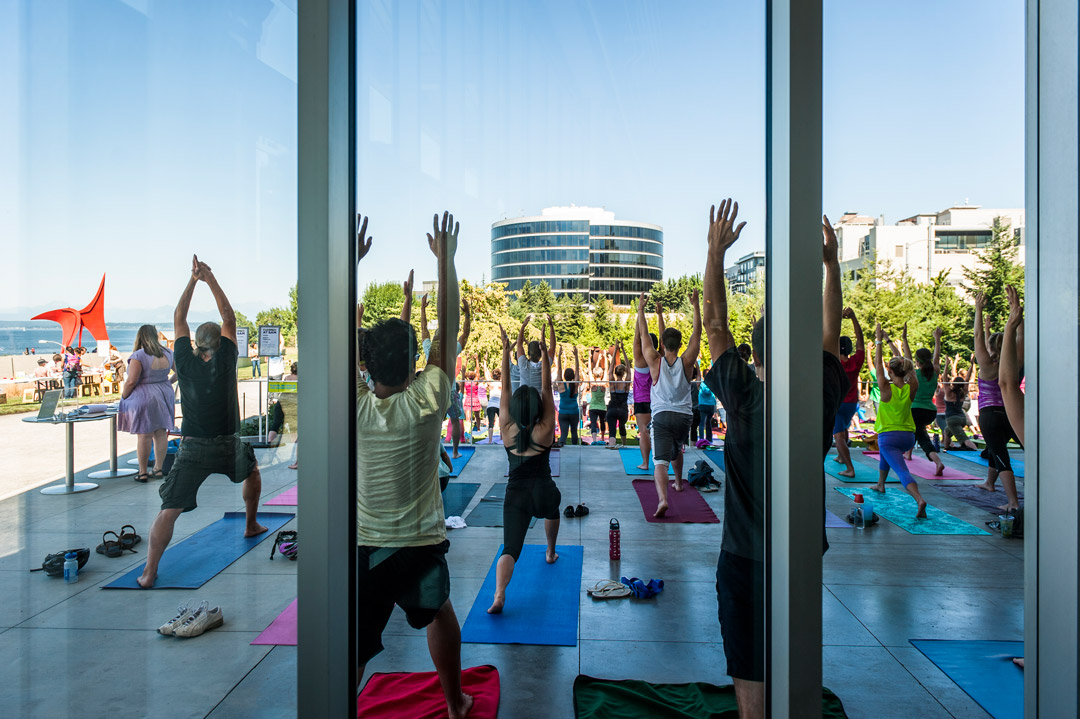View from Above: How Art, Environment, and Community Come Together at the Olympic Sculpture Park
The Trust for Public Land Terrace resides at one of the Olympic Sculpture Park’s most active intersections. The Terrace is one of the best places to watch people gathered to picnic, sketch, and listen to live music on the grassy tiers of the Gates Amphitheater that cascade down to the valley. Richard Serra’s massive sculpture, Wake, looks especially striking with the surrounding landscape seen from the Terrace surrounding the PACCAR Pavilion. The contrast of the green firs, cedars, and hemlocks in the surrounding valley highlight the industrial steel sculpture’s organic color and forms.

The Trust for Public Land’s role as SAM’s partner in the creation of the Olympic Sculpture Park is embodied in the intersection between art, nature, and community that can be seen from the Terrace. The two organizations worked together to purchase and clean up the former Unocal (Union Oil of California) brownfield site that became the Sculpture Park. In turn, the park speaks to a number of environmental goals relevant to The Trust for Public Land’s mission. Shaun O’Rourke, the national organization’s Green Infrastructure Director, explained, “Increased urban green space is at the core of our mission to create healthy livable communities for generations to come . . . Cities need to think about how they can solve multiple problems at one time, and parks offer unique solutions for climate adaptation.” He went on to describe how the Olympic Sculpture Park addresses many of The Trust for Public Land’s Climate-Smart Cities program objectives by cleaning up and converting a former industrial site into one that has a more resilient coastline edge, connecting the city directly to the water, and reducing the heat island effect by introducing high-reflectivity pavement to the site.
When considering the environmental achievements of the park, Julie Parrett, a former project manager for the Charles Anderson Landscape Architecture firm that contributed to the park’s design, pointed to its storm water collection and drainage system. She explained, “Any precipitation that falls on the park’s eight and a half acres outflows directly into Elliott Bay, as opposed to being taken all the way over to a treatment center near Discovery Park.” This is possible because the Sculpture Park is filled with native plantings that don’t require the use of pesticides, herbicides, or insecticides that would contaminate the storm water—an important innovation 10 years ago that has since become more common in parks throughout the country.

The Trust for Public Land Terrace offers the vantage point it does because it sits atop one of the highest points of the park’s varied topography. As Parrett explained, many of the hills and valleys resulted from the addition of clean fill to the site. In this case, the fill was brought from the SAM’s building excavation downtown, whose expansion was being constructed at the same time. Instead of trucking in new fill from elsewhere, the Olympic Sculpture Park reused the excavation debris as landscape features.

Next time you find yourself relaxing on the Terrace, consider yourself integral to The Trust for Public Land’s aim of creating community cohesion by getting people outside. As Martha Wyckoff, national board member for The Trust for Public Land and SAM trustee said, “The Olympic Sculpture Park is not a static place. It’s dynamic by its landscape, by being an art center and as a major connector for how we flow through an increasingly dense part of our city.”
—Erin Langner, Freelance Arts Writer and Former SAM Adult Public Programs Manager
This post is part of an ongoing series exploring the history of the Olympic Sculpture Park in celebration of its 10th anniversary. Over the course of this year, we will continue reflecting on the Park’s evolution over the past decade.
Images: Photo: Robert Wade. Photo: Robert Wade. Photo: Robert Wade. Photo: Nathaniel Wilson.
